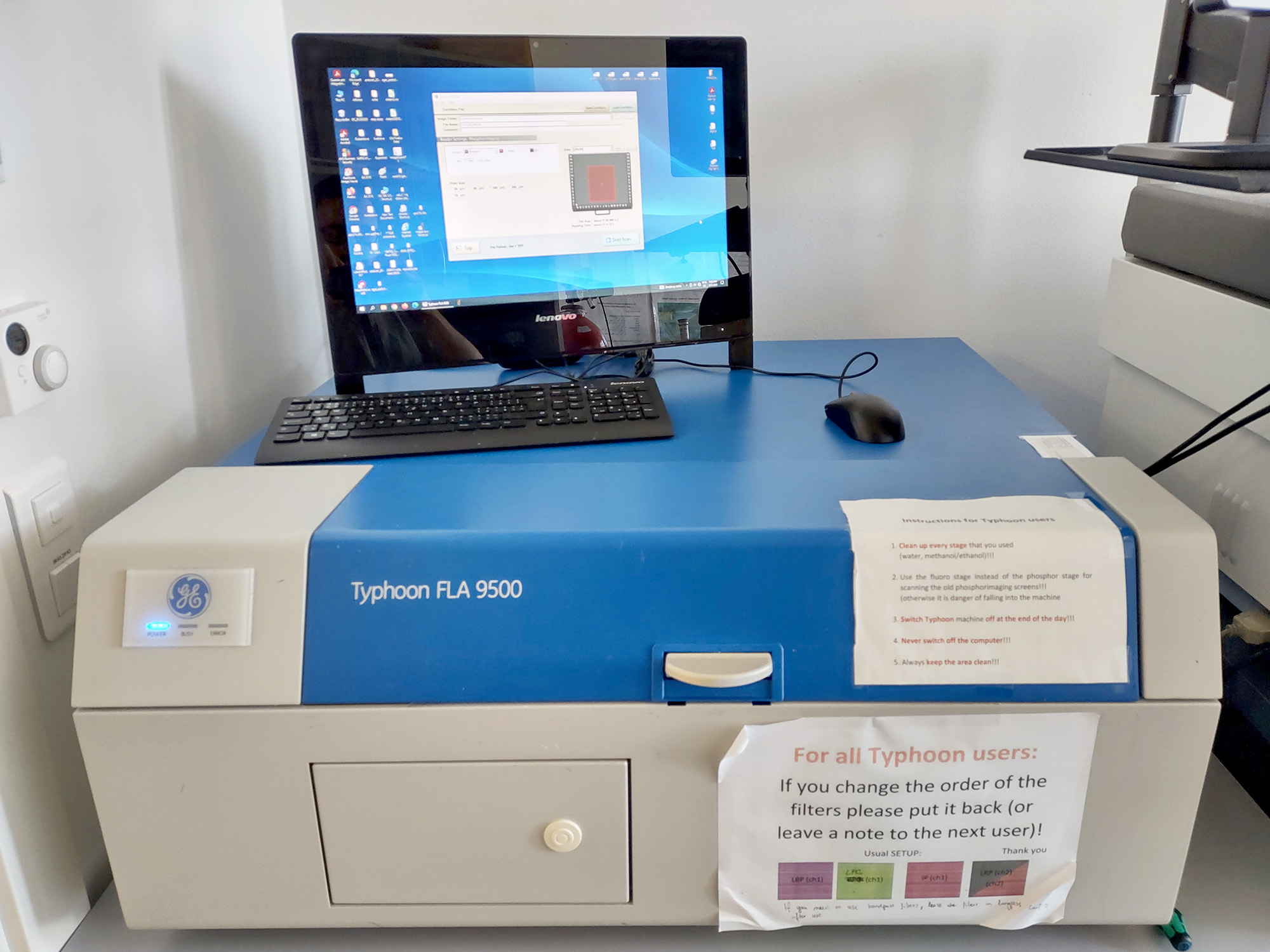Radio-TLC scanner
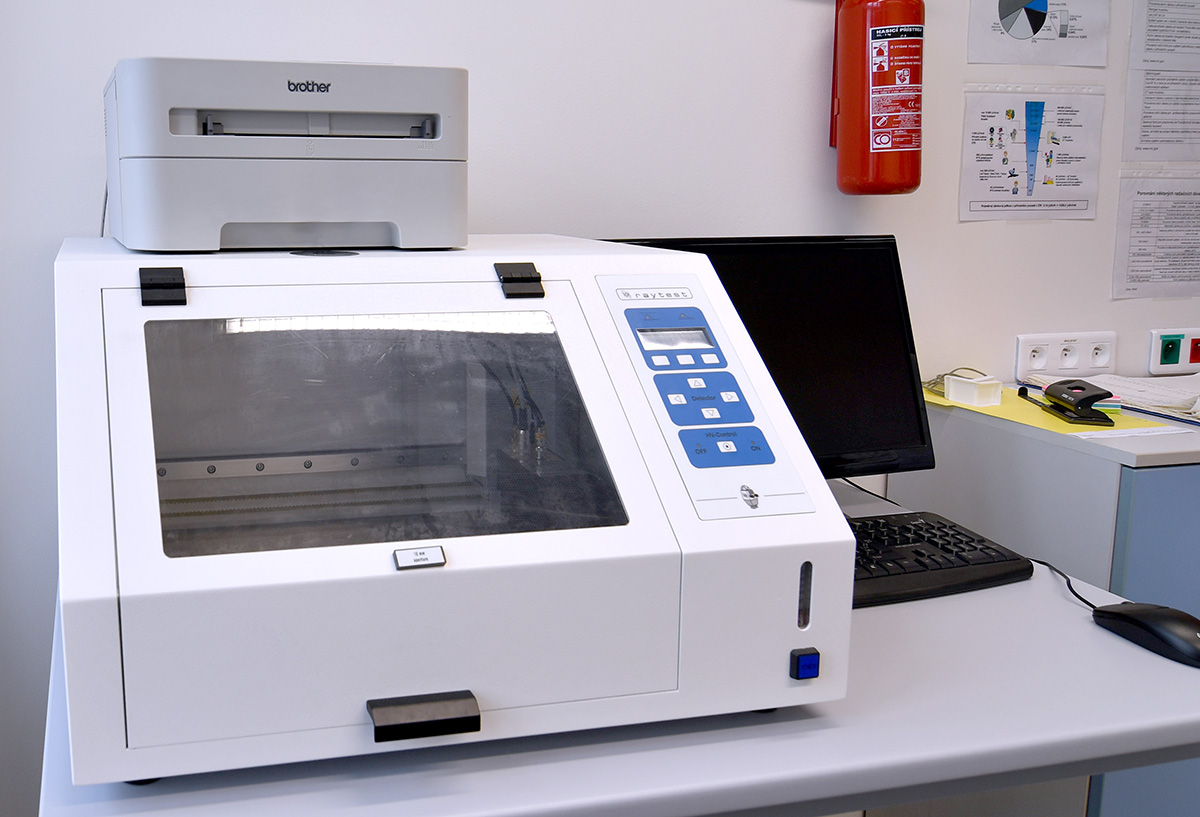
Radio-TLC scanner RITA (RAYTEST, Germany) with software GINA STAR TLC enables automatic quantitative measurement of radioactivity distribution on up to two 20×20 cm TLC plates. Using 20 mm entrance aperture of the detector enables to measure 9 single traces on one 20×20 cm plate. With 3 mm entrance aperture the 2D distribution of radioactivity on TLC plates developed in two directions perpendicular to each other can be measured and evaluated. The position sensitive proportional detector continually flushed by the counting gas (mixture of 90% of argon and 10% of methane) measures the whole trace at once and this gives way to high sensitivity in reasonably short counting times.
Location
Other instruments in this category
The 300 MHz NMR spectrometer equipped with a special tritium probe which allows measurement of 3H NMR spectra in tritium-labelled compounds.
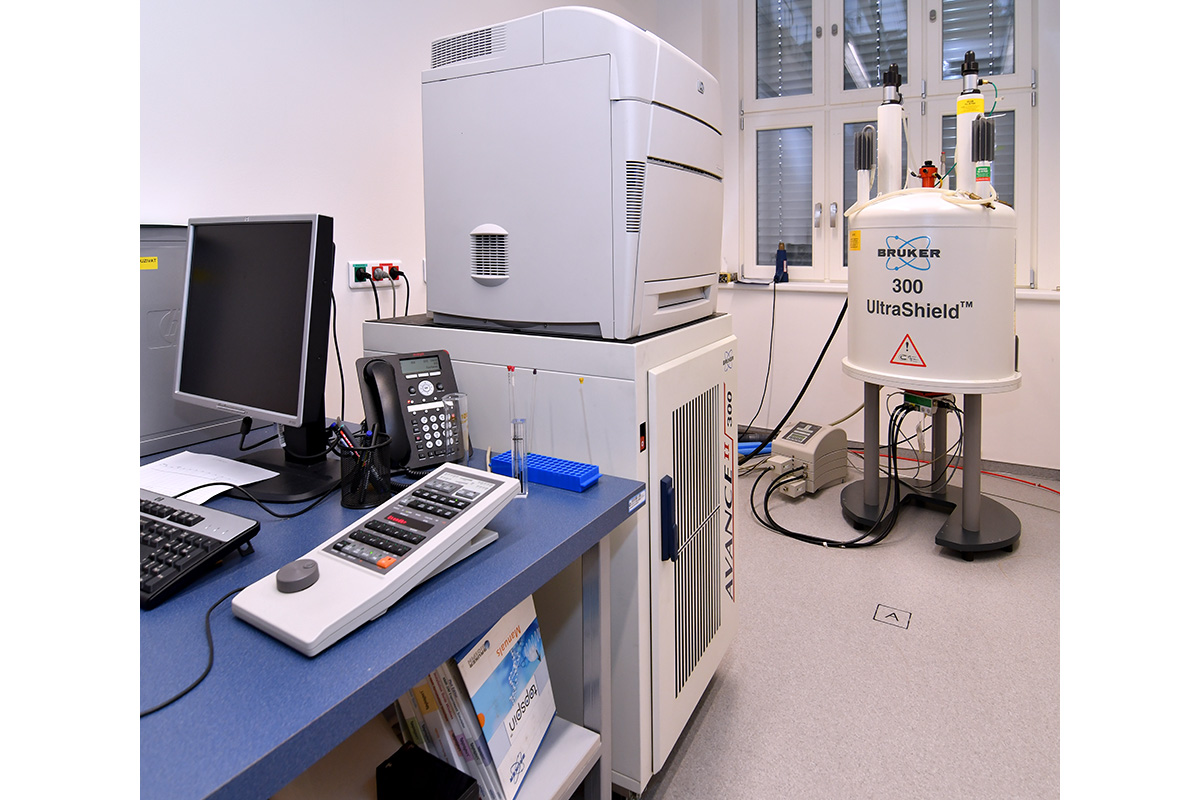
Agilent 5975B Inert MSD is a quadrupole mass spectrometer coupled to 6890N gas chromatograph. Mass range is up to 1050 u. GC is equipped with split/splitless injector with autosampler and HP-5 capillary column.
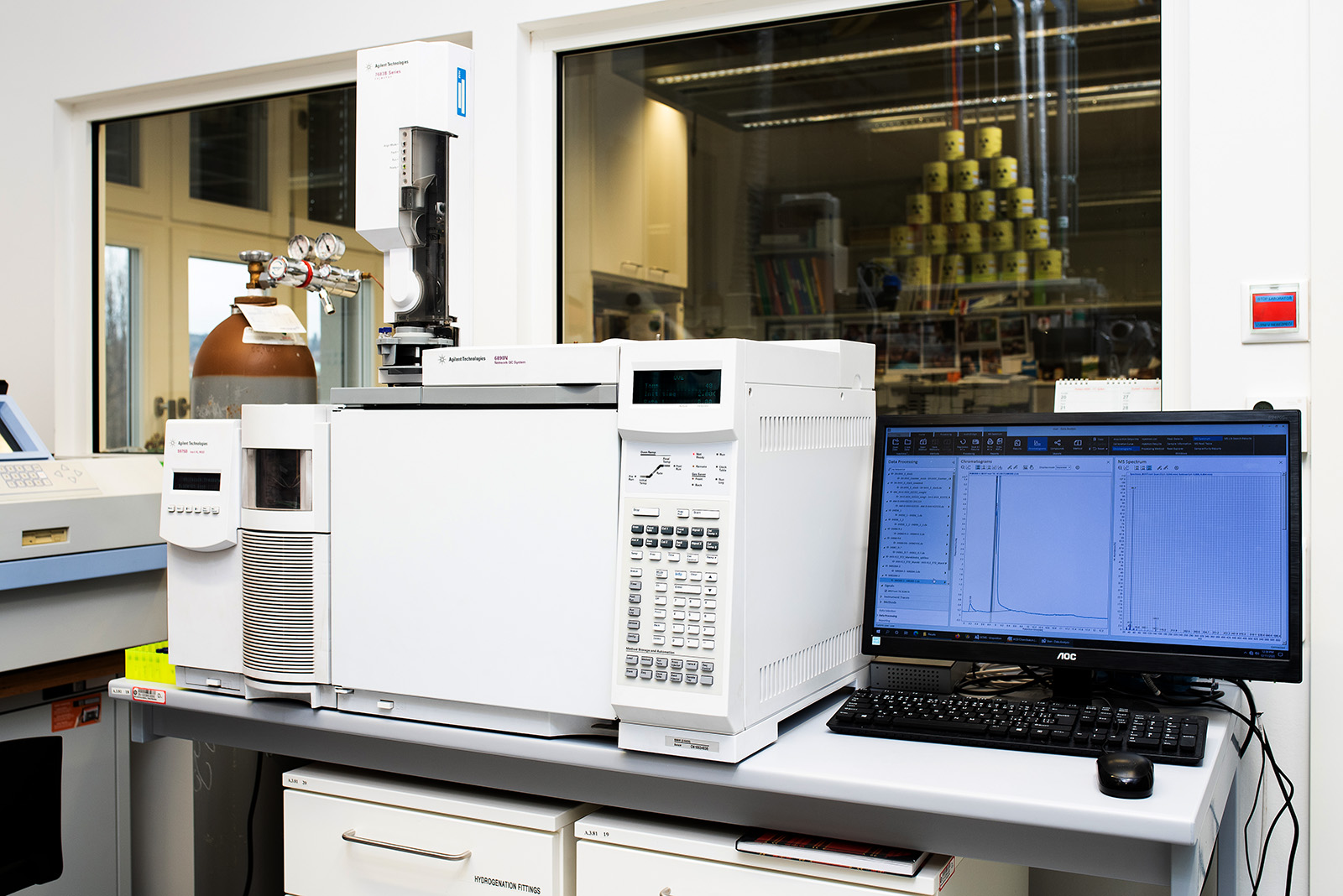
Liquid scintillation analyzer Tri-Carb 2900TR (Perkin Elmer) is a computer-controlled benchtop liquid scintillation analyzer for detecting small amounts of α, β and γ radioactivity.
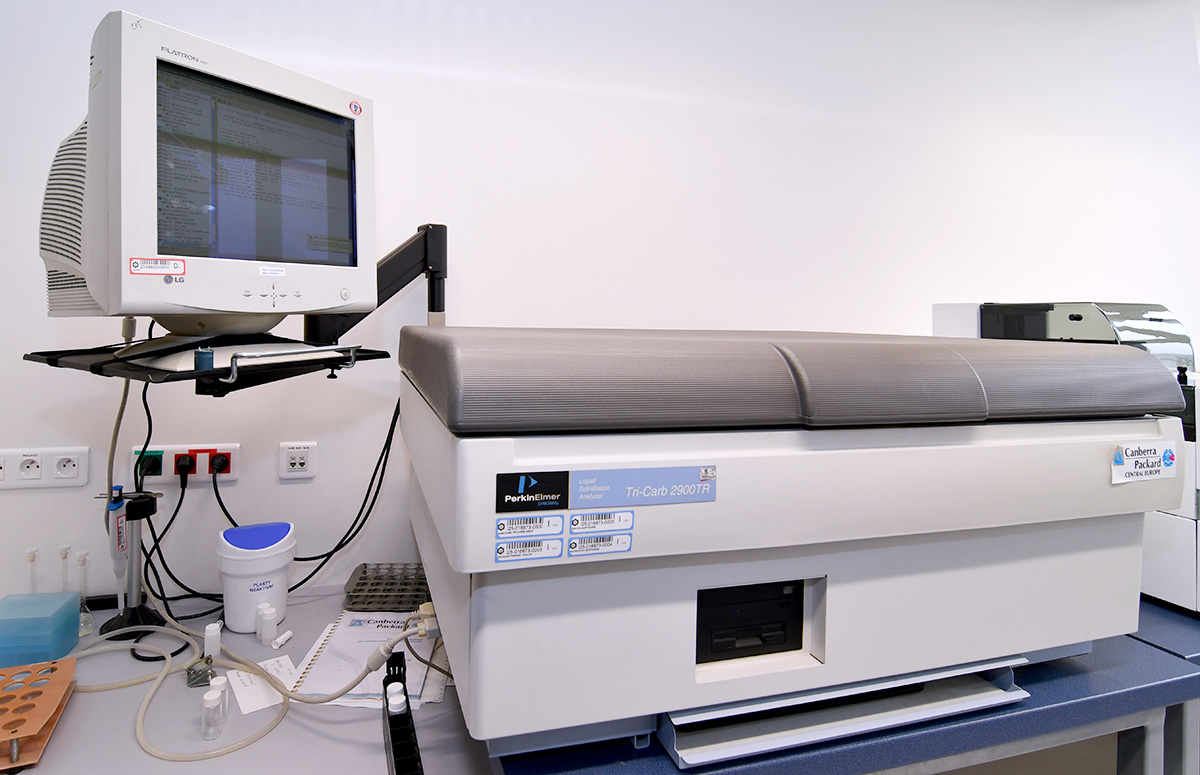
Tritiation Manifold System (RC Tritec) is based on U-Bed Technology to provide fresh, 3He-free Tritium for tritiation by simply heating the UT3-bed, also allowing the recovery of surplus gas after completion of a reaction.
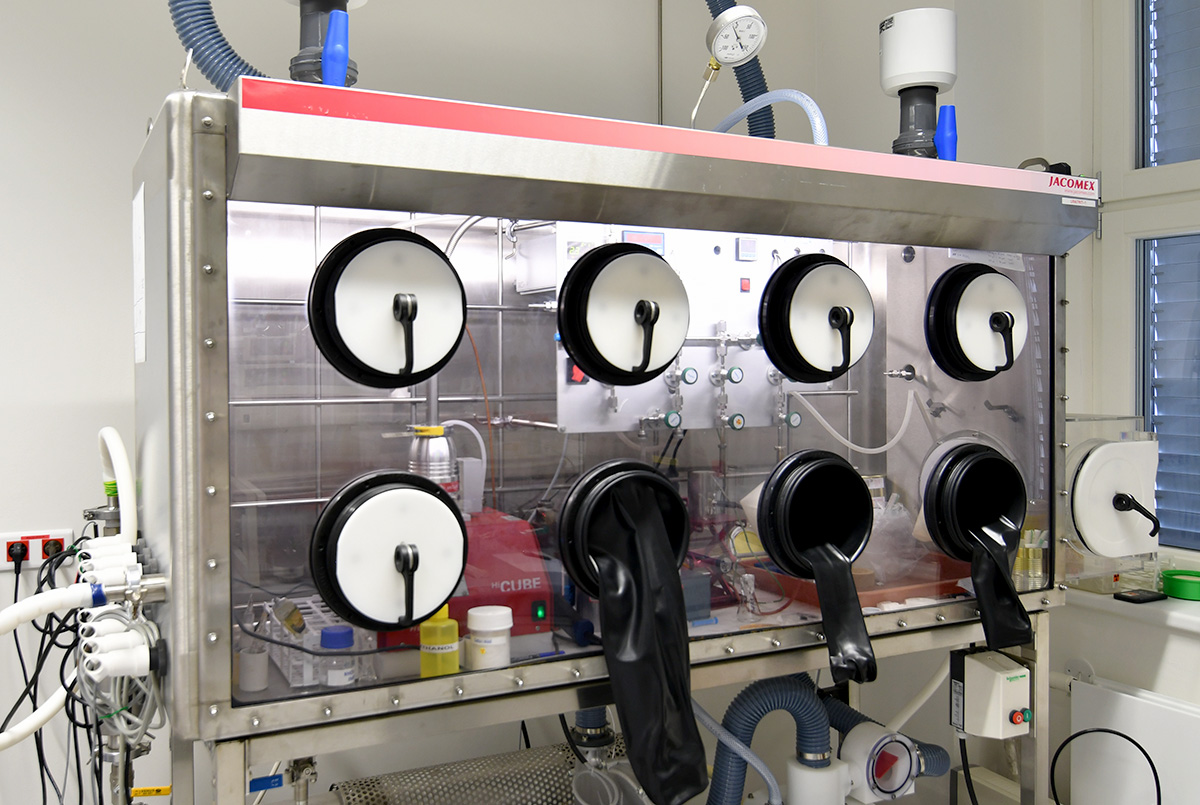
2470 WIZARD2 Automatic Gamma Counter (Perkin Elmer) is a high-throughput instrument with 5 independent well-type detectors measuring simultaneously detection of γ-ionization. Radionuclide library consists of 45 nuclides: such as 125I, 131I, 18F, 57Co, 99mTc, 64Cu, 67Ga, etc.. Sample changer has a storage capacity of 55 racks (550 samples). The instrument is installed in A.3.76 and available for your self-service use after short training. An automatic or manual counting mode, multi-user capability and multitasking operation environment provide flexible and efficient sample processing. Energy range is 15-1000 keV. Maximum count rate is 6 million DPM (app. 5 million CPM) for 125I. WorkOut Plus™ with QA software for RIA/IRMA and custom data analysis and reporting lets you easily create and transfer custom reports. Measured data are stored on ownCloud IOCB service system and can be easily reached from your computer.
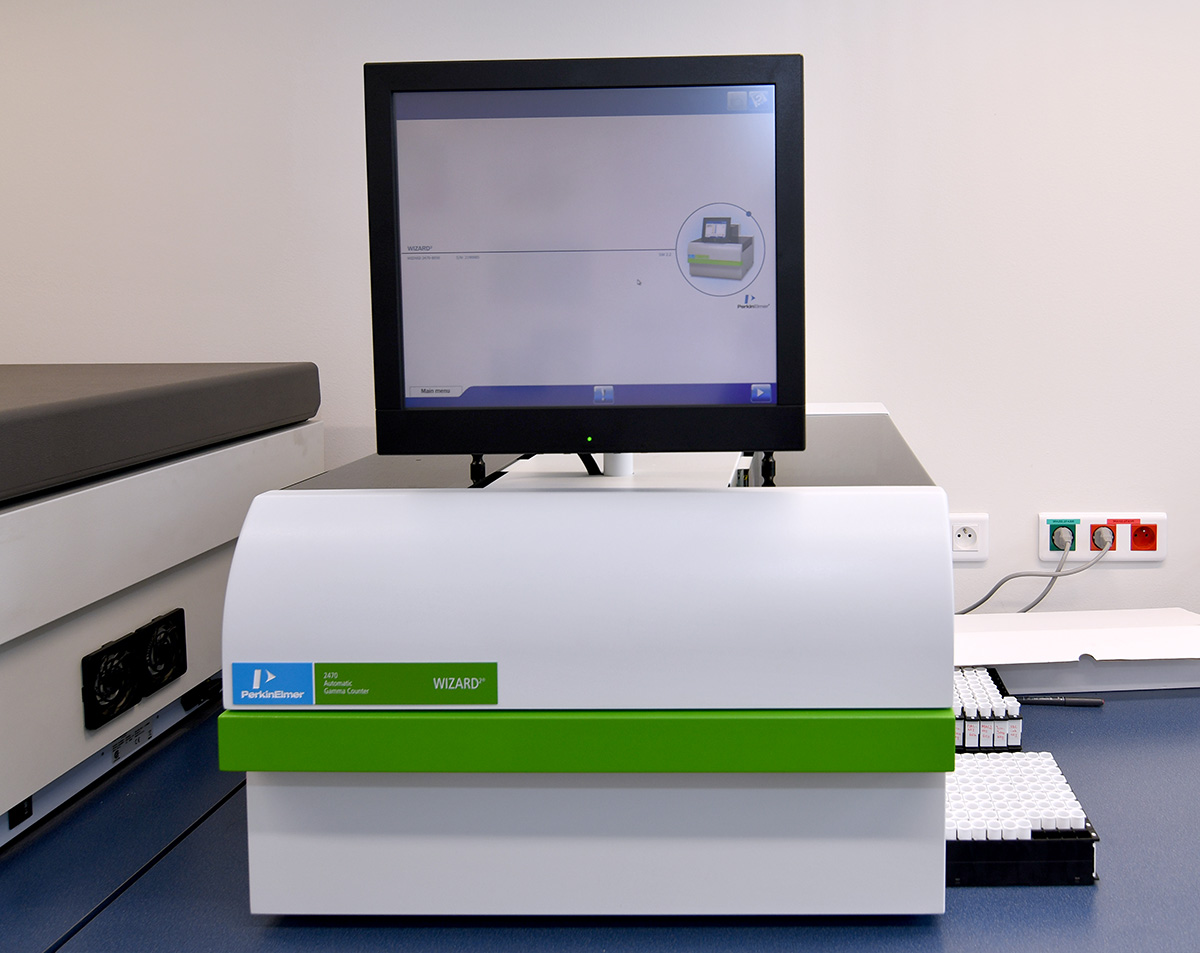
An analytical and semi-preparative Waters Alliance HPLC system equipped with the e2695 Separation module, 2995 PDA detector and Empower 3 software for processing of data. The system is combined with a radioactivity-HPLC flow detector Ramona Star (Elysia-Raytest) able to detect with high sensitivity whole spectrum of emission (α, β, γ) of analyzed samples. Photomultipliers with a 2” diameter photocathode provide highest sensitivity and very low background. Liquid scintillation admixture is the most sensitive detection method for very low energy β- nuclides such as 3H. Alternative internal solid scintillators offers almost the same efficiency for 14C as liquid scintillator admixtures. The number of counts per interval time is transferred to a PC operating Elysia-raytest`s GINA* program. The system is installed in A.3.81.
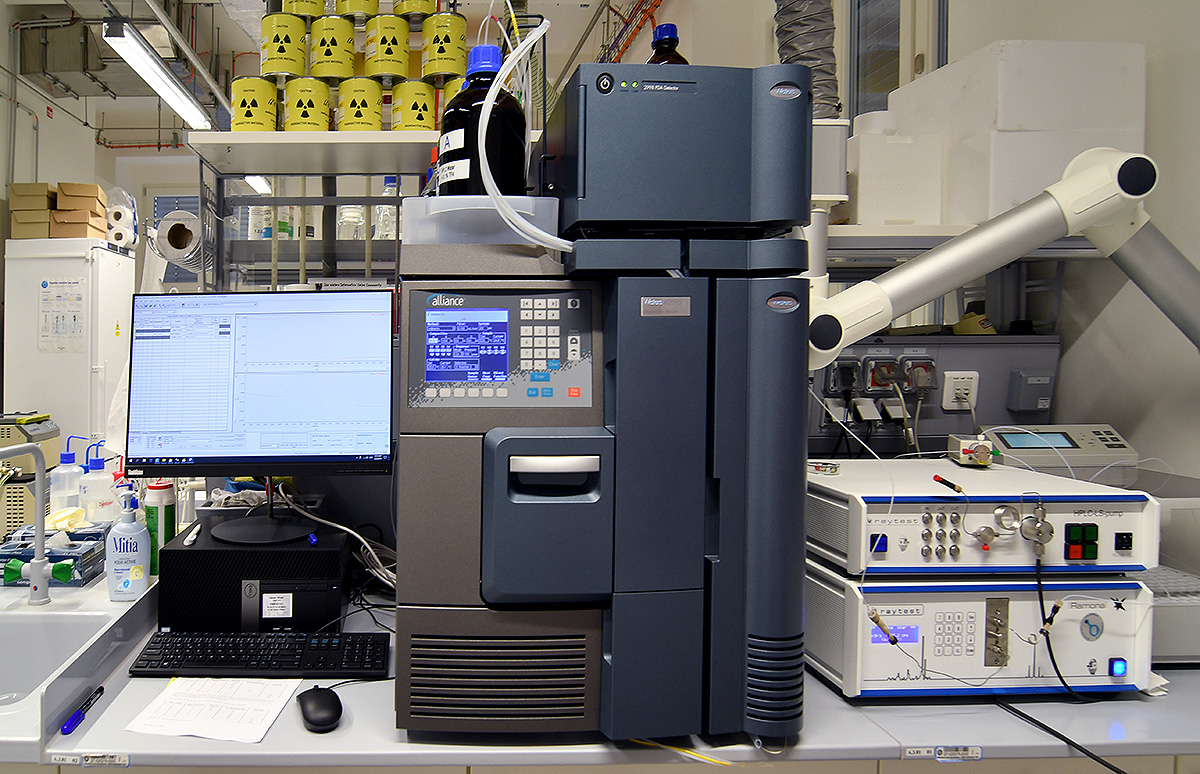
Assembly consist of Waters Delta 600 solvents delivery system, Waters 2470 dual wavelength UV detector, RAMONA radioactivity detector from Raytest (Germany) and Waters RS Fraction collector III. PC data collection and running software is EMPOWER 2.0 from Waters.
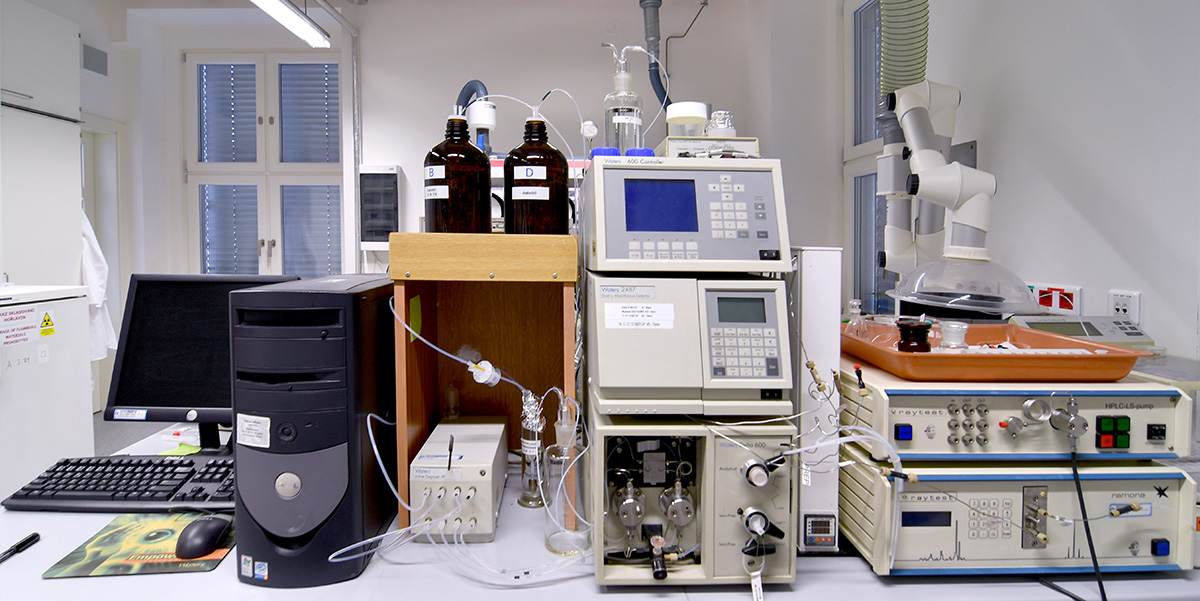
CoMo 170 (Graetz, Germany) is a portable contamination monitor for α, β and γ surface contamination. The detected events are counted over time and displayed digitally in c/s, Bq or Bq/cm2.
- CoMo is using 2 scintillator materials. For the detection of α-radiation ZnS is used, for detection of β and γ radiation a plastic scintillator foil is used.
- The large area detector window is permeable for low energy α radiation like 238U, or beta radiation like 14C. The thin window can be replaced easily by the user and measurements can be continued without delay.
- The light flashes generated by the α or β/γ radiation can be separated by pulse analysis. Nuclide specific sensitivity is calculated and alarm values are pre-programmed.
- This instrument is available for your need - e.g. a mandatory weekly lab survey of your supervised area - in A.3.82 after request.
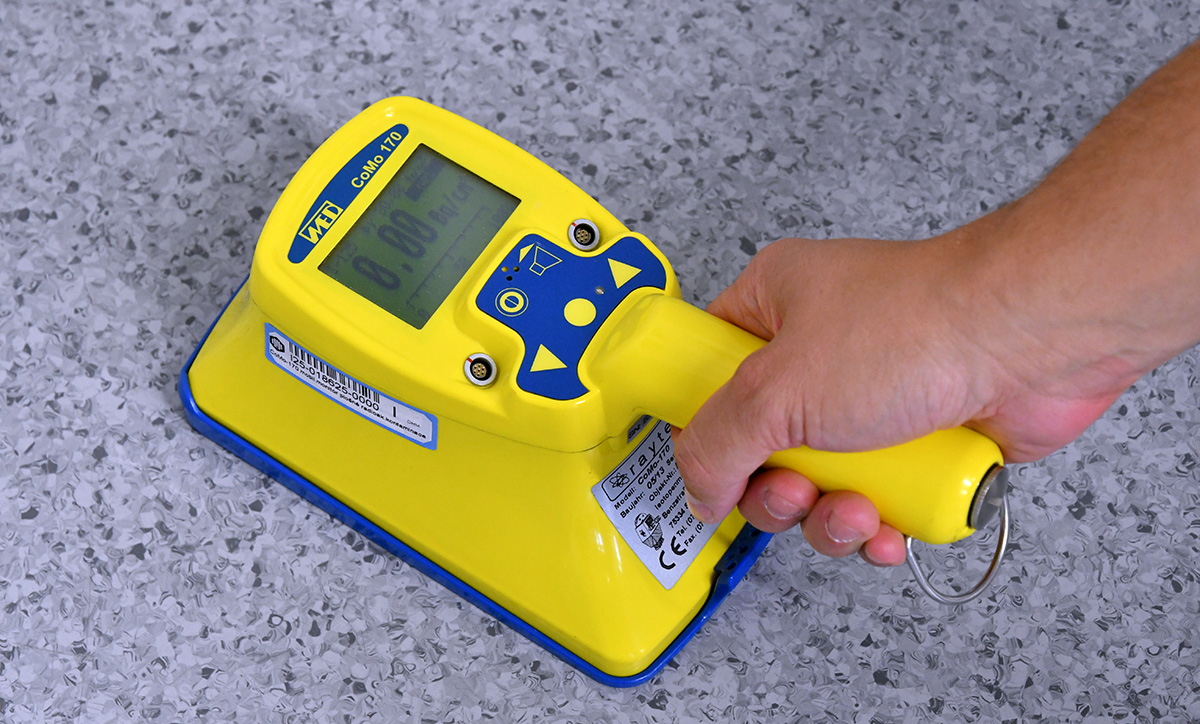
The MicroBeta2 (Perkin Elmer) system provides coincidence counting, a unique patented detector configuration with two photomultiplier tubes that detect the signal simultaneously. This configuration ensures high efficiency and extremely low background for a variety of radionuclides.
- Enables detection of β and γ isotopes.
- High throughput - 6-detector configuration.
- Support of 96 and 384-well plates.
- 16-plate capacity or robot-loading interface.
Liquid Scintillation Counting - Scaled down traditional vial-based liquid scintillation counting assays to microplates.
Solid-phase Homogeneous Assays - MicroBeta2 for best-inclass performance in all solid scintillation assays, including beadbased scintillation proximity assays and FlashPlate assays.
Cell Proliferation - MicroBeta2, the perfect choice for analyzing cell proliferation through filter-based 3H-labeled thymidine uptake.
Cell Cytotoxicity - 51Cr release assays for cell cytotoxicity using LumaPlate technology or liquid scintillation counting (LSC).
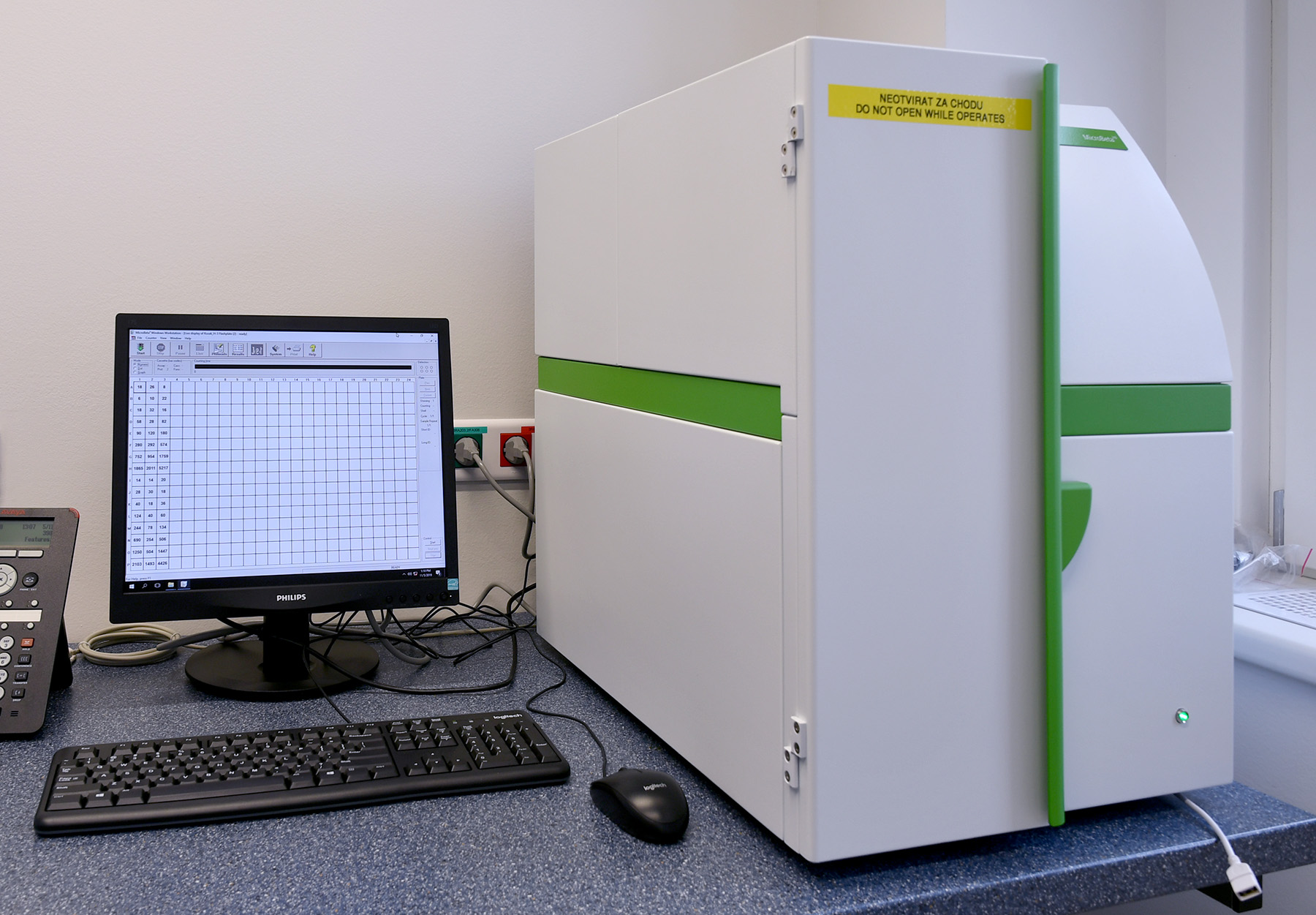
The system is combined with a Waters™ SQ Detector 2 is an advanced bench top single quadrupole mass detector designed for high performance LC-MS applications. Ionizing source ESI or APCI with wide mass range 2 to 3072 m/z. System supported on MassLynx™ 4.1.
The system can be further combined with a radioactivity-HPLC flow detector Ramona Star (Elysia-Raytest) able to detect with high sensitivity whole spectrum of emission (α, β, γ) of analyzed samples. Photomultipliers with a 2” diameter photocathode provide highest sensitivity and very low background. Liquid scintillation admixture is the most sensitive detection method for very low energy β- nuclides such as 3H. Alternative internal solid scintillators offers almost the same efficiency for 14C as liquid scintillator admixtures.
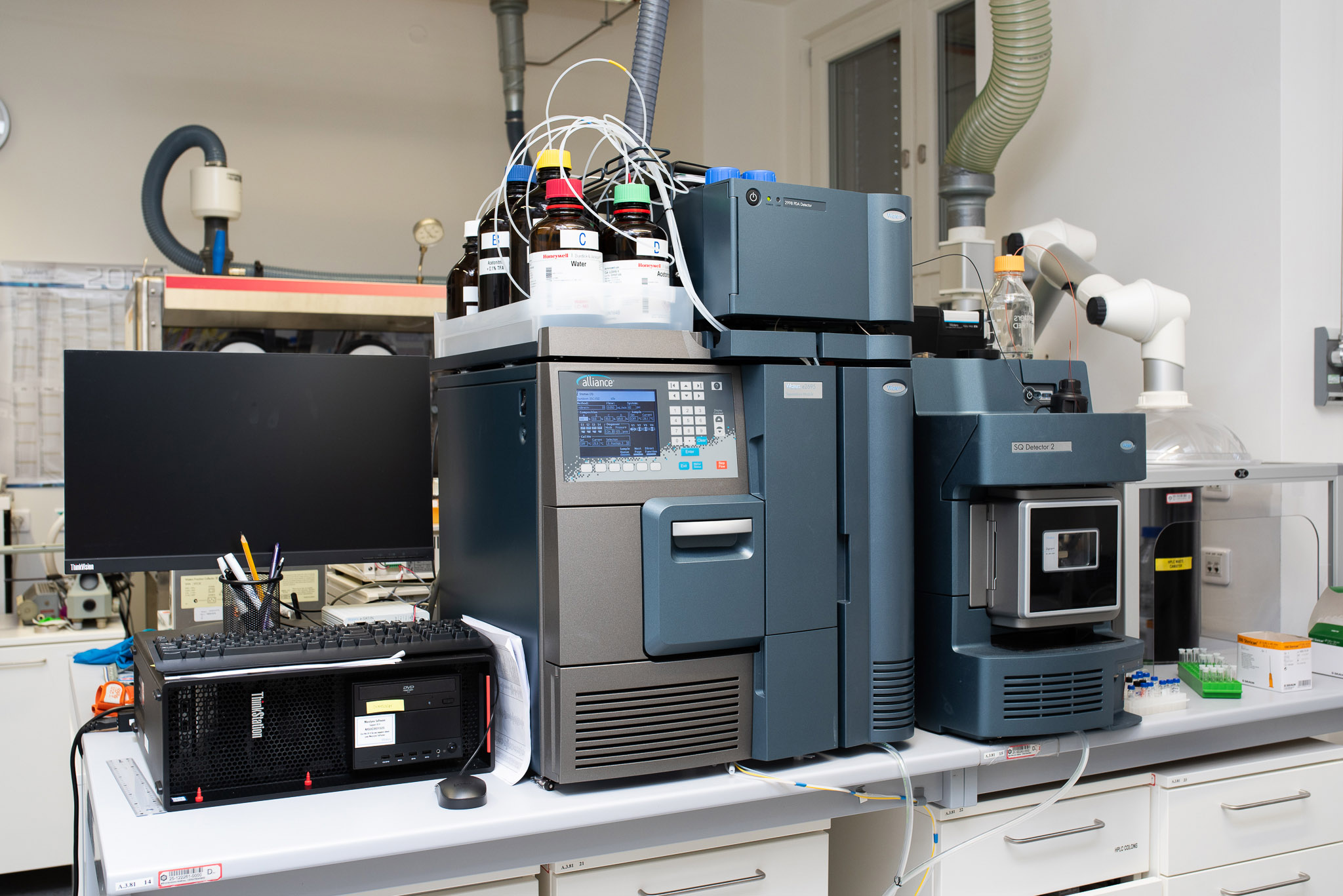
Harvesting cells is fast and easy with PerkinElmer’s FilterMate™ Universal Harvester. This compact system harvests and washes all 96 samples simultaneously from shallow- or deep-well microplates. With this FilterMate model it takes only minutes to process and transfer samples onto dedicated filtermats for counting on our MicroBeta2 instrument.
With the FilterMate, you can leave filtermats intact and count them on our MicroBeta2 (A.3.76.), or cut them into individual filter disks and transfer them easily into individual gamma or liquid scintillation counting vials for counting on our 2470 WIZARD2 Automatic Gamma Counter (A.3.76.) or Tri-Carb 2900TR (A.3.76.).
Used for a cell proliferation (thymidine incorporation) assay using a cell harvesting method and filter counting on the MicroBeta2. The FilterMate harvester is very robust and simple to use. It supports all MicroBeta2 sample formats.
The cell proliferation assay with 3H-Thymidine incorporation is one of the most reliable and popular filter counting applications. There are several alternative non-radioactive methods for thymidine incorporation; however, they do not correlate directly with DNA synthesis and contain many additional assay steps compared to the 3H-Thymidine filtration assay.
Receptor-ligand binding assay with radioligands is another established reference method. The compound behavior of a tritiated ligand is the same as the unlabeled ligand; thus the method provides accurate and natural binding affinities. The GF/C type filter material can be used in receptor-ligand binding studies. For example, if the receptor concentration is 1 pmol per mg and the specific activity of the radioligand is 48 Ci/mmol, a spot with 100 μg collected protein at a saturated binding level would contain 10560 DPM.
Other applications: Cytotoxicity assays, Nucleic acid degradation, Cell wash station for adherent cell assays, etc.
- Excellent counting efficiency and low background
- Only one scintillator addition step per 96 samples
- Small scintillator consumption: 5 mL per one Filtermat A, 25 μL per 96-well
- Easy to handle: it is a plate
- Low risk of cross contamination due to separating well structure
- Located at A.3.77.
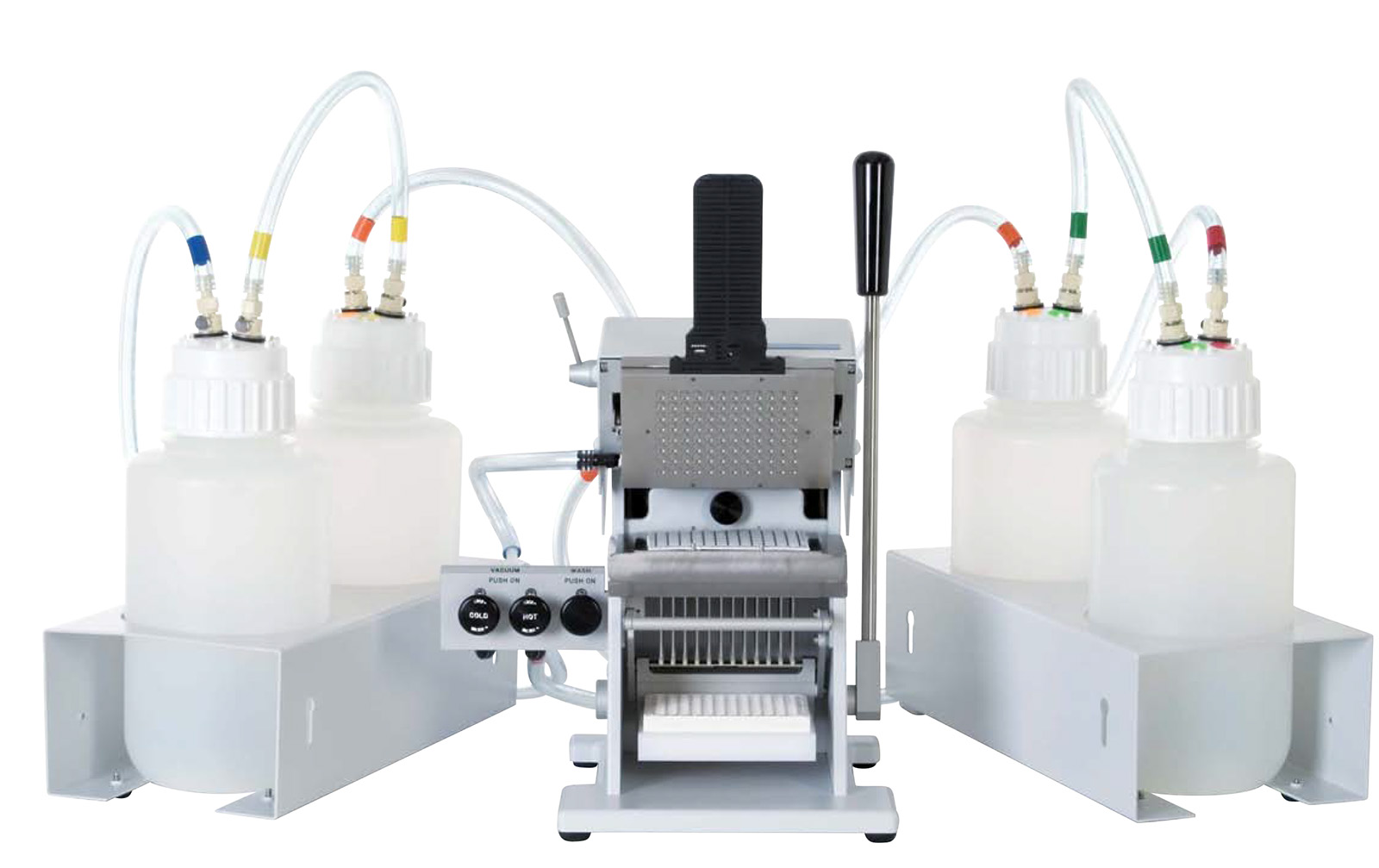
The system provide a reliable cryopreservation solution for the long-term storage of research samples of compounds labeled with radionuclides. The cryo-genic storage system uses racks for boxes of 2 & 5 mL NALGENE vials coated by CryoFlex™ immersed in liquid nitrogen.
Located at A.3.72
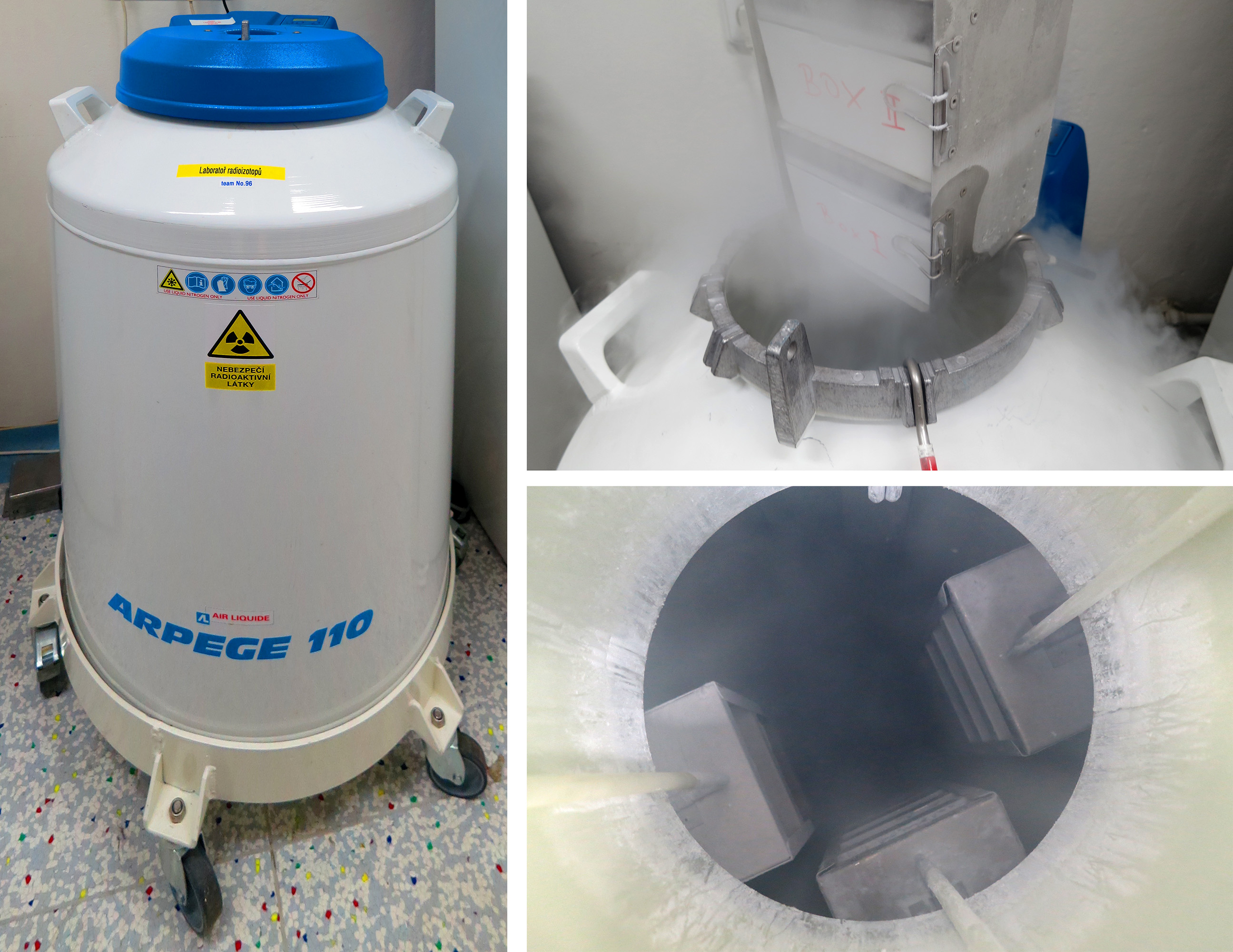
Typhoon FLA 9500 is a variable mode laser scanner with modular access to the optical components, providing both versatile and flexible imaging for precise quantitation of proteins, nucleic acids, and other biomolecules. The system provides several imaging modes at any time, including fluorescence and chemifluorescence, filmless autoradiography, and digitization of colorimetrically-stained samples (e.g., Coomassie™ blue and silver stain). It is also adequate for quantitative chemiluminescent imaging that does not require maximum sensitivity.
- Radioisotopes: 3H, 11C, 14C, 125I, 18F, 32P, 33P, 35S, 99mTc, and other sources of ionizing radiation
- Pixel sizes: 10, 25, 50, 100, 200 μm, and prescan 1000 μm
- Dynamic range: 5 orders of magnitude
